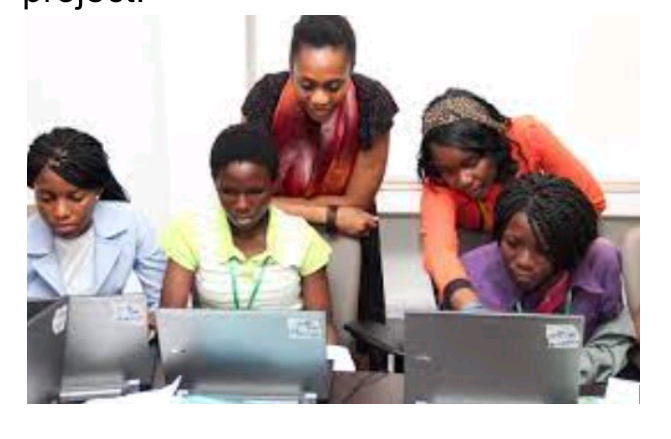The rise of online learning in Nigeria is a long-drawn aftermath following the introduction of computers first, then the internet, in Nigeria. The entire process took years to accomplish; and it occurred in stages. And we can categorically say it is still a project under development – just like the rest of the Nigerian project.
Clearly the Western world and Asian countries have developed in leaps and bounds technologically in less than one century thereabout. Between the 1960s and 2023 in particular, Europe, North America, Asia and Australia have undergone huge transformations in technological and economic development. And both their education institutions and emerging technologies mightily impacted on one another in repeating cycles.
Nigeria could hardly catch up with this trend (as with the rest of Africa) for some years, at the turn of the 21st Century. All of that is changing now. This article explores the uneven, rugged road that led to the slow but sure rise of online learning in Nigeria.
Online Learning: The Definition
Online learning, according to Top Hat learning website, defines online learning as:
“… a method of education whereby students learn in a fully virtual environment. First introduced in the 1990s with the creation of the internet and utilized in distance learning, online learning (also called e-learning) is most prevalent in higher education, enabling students from different geographical areas to engage with an academic institution and other students online and learn flexibly, at their own pace, while working towards a degree or certificate.”
Online learning refers to an internet-based learning environment that can connect students of diverse backgrounds who boast different perspectives. A higher education institution will use a learning management system, or LMS, to facilitate online learning, which can take the form of asynchronous learning (where students are not required to be online at the same time, and utilize discussion threads and e-mails to complete coursework) or synchronous learning (where students must be online at the same time).’
Online Learning in Nigeria
From the foregoing, we can see that online learning is fully based on the internet, which serves as the necessary backbone. Additionally, for Nigerians to get the most out of online learning requires continuously buying affordable internet data, and high-speed internet connection. Finally, they must also be able to afford internet-enabled digital devices – be it smartphones, tablets, computers. or even smart TVs. Along with additional setup equipment if necessary. This is largely possible for citizens of the middle class and above who can afford it.
Many remote locations and rural areas in Nigeria still do not have adequate (or even any) cellular or internet coverage in 2023. Also about 44.6 percent of the Nigerian population still do not have access to the internet at the start of 2023. This is in part, due to the large number of poor people in Nigeria. This clearly puts students and other individuals in such affected areas, who desire access to online learning services, to a big disadvantage.
Down History Lane: Advent of Computer Usage in Nigeria
Historically speaking, the first electronic computer ever to be used in Nigeria was in 1948. It was bought by the Nigerian Ports Authority – a JCL visible record computer. The next significant use of a computer was for the analysis of the 1962-63 National Census, according to reports. For the next 10 years thereafter, only 20-25 computers existed in the entire nation. Funny enough, just about 6 of them belonged to multinational companies.
In that period, only three established companies were involved in computer sales and distribution in Nigeria – which were IBM, NCR and JCL. These three companies were subsidiaries of international computer manufacturers which specialized in the making of mainframes and minicomputers only, back then.
However, between 1973 and 1977, a fairly significant leap took place. About 70 computers had been owned and installed by major institutions in Nigeria. They included:
Major Nigerian Institutions That Adopted Computer Usage
– Government departments and parastatals
– Several Nigerian universities
– Federal Office of Statistics
– West African Examinations Council (WAEC)
– Joint Admissions and Matriculation Examination (JAMB)
– Defunct National Electric Power Authority (NEPA)
– National Ports Authority (NPA)
– Many Nigerian banks
– Some commercial firms of worthy stand
The two tables below give a quick run-through of the events and numbers involving computer acquisition and usage across Nigeria, beginning from 1948.
Source: United Nations University, Japan website archives
The Federal Government established an indigenization decree in 1977. To the effect that all foreign companies must have a minimum stated percentage of Nigerian nationals participating in them. IBM left the country, outrightly refusing to comply with this directive. Subsequently, the degree encouraged many local computer vendors to enter the market, and competition for more sales heated up. In fact, computer installations rose significantly from 1978 onwards. And by 1983, the first set of microcomputers were acquired by Nigerian organizations. See the tables below for clarification.
Source: United Nations University, Japan website archives
The Precursor of Online Learning in Nigeria: Radio & TV Distance Learning Programmes
The onset of the internet in Nigeria took many decades to manifest. And that was what finally led to the rise of online learning in Nigeria. In the years leading up to this, both computer equipment and telecommunication infrastructure were slowly gaining ground across Nigeria.
You should be aware that the field of telecommunications is a fairly broad collection of information transmission technologies. They include radio broadcasting, television broadcasting, telegraph, satellite communication, computer networks, and the internet. And virtually all of them contributed to the rise of online learning in Nigeria.
Nigerian radio and TV stations started effectively dishing out educational programs in the 70s and 80s. These were the distance learning education programs broadcasted on radio and TV. They were intended to prepare primary and secondary school students for the General Certificate of Education. The curriculum covered the core subjects of English, Science and Mathematics.
The first of its kind on radio was aired after Nigeria’s independence. It was an English distance learning Radio class by the Nigeria Broadcasting Corporation. Soon after, educational television programmes were offered by the then National Television of Nigeria (NTV). Then there was the Schools Educational Broadcast of Radio Nigeria (in Lagos). It was transmitted through all radio stations and broadcasted throughout the whole federation.
Distance Learning Programmes in Nigeria’s Higher Institutions
Eventually, the distance learning model was taken to the universities and higher institutions, even before the internet was ever used. The University of Lagos was the first to establish a Distance Learning Institute in Nigeria in 1974 (called Correspondence and Open Studies Unit back then). UNILAG offered degree education courses and postgraduate diploma in education at the beginning. In 1976, the National Teachers Institute (NIT) began their distance learning programmes in education. This was followed by Ahmadu Bello University, then University of Ibadan and gradually other schools.
The National Open University of Nigeria, was finally set up in 1983 as the first fully-operated distance learning higher institution in Nigeria. It was however suspended by the then military government in 1984, to be restored by a civilian government in 2002 out of necessity. By this time, it became useful, as new computer and internet-based technologies for learning became available. And the existing higher institutions could not meet the needs of the teeming population of candidates. That apart, there was a proliferation of poorly-administered outreach centers of many higher institutions that needed to be closed down.
The Beginnings of Online Learning in Nigeria
The development of the distance learning model being put in place in many higher institutions was just the beginning. As technology gradually creeped into the Nigerian education sector, lecture notes first became available on CD-ROMs. Unfortunately, not enough computers were available to students to play the CD contents conveniently at school, or in their free time. There was also the problem of irregular power supply, and high cost of running generator sets to obtain alternative power.
With time, a lot of students resorted to using the popular cybercafes of that time to advantage. Even though hackers also prowled the cafes to interfere with networks and break into online accounts, it nevertheless helped many students to be able to study fairly well.
The big breakthrough came with the advent of mobile internet. The first Internet Service Privider (ISP) emerged in Nigeria in 1991 – government-owned National Center for Communication Technologies (NCCT). Within about 5 years, other ISPs namely Vee networks, Interswitch and Nitel joined the race to provide internet access to the public. However, it was quite expensive.
Present-Day Online Learning in Nigeria: The Slow but Sure Ascent
The 2G digital mobile network was subsequently launched in Nigeria in 1992; and it came with incredible slowness but it was welcome. By the time 3G mobile internet stepped into Nigeria (2007) with improved performance delivery, the rush for mobile internet by individual users intensified.
Naturally, the teeming population of youths (and most of them were students) subscribed far more to mobile internet. Students of higher institutions eagerly plunged into mobile internet services to handle assignments, projects and get study materials successfully. The habit gradually trickled down to secondary school students.
Also, teachers were forced to gradually adopt new teaching methodologies, tools and research that were technology-based. Particularly in the few private schools that could afford it; and some well-establisghed federal tertiary institutions that had the facilities. Old, increasingly useless curricula needed to be scrapped to teach students new technology-based skills required in the modern workplace. The unemployment crisis due to inadequate skills of helpless graduates had started brewing. It eventually informed the Nigerian education system of a necessary overhaul.
The final blow came when the Covid-19 lockdown era forced many workers to work from remote locations. Many schools were surely kept of out physical service. Only the well-equipped private and government schools with internet access (at all levels) were able to continue to teach their students.
Conclusion
The arduous return to normal social and economic activities (including schooling) brought the truth closer home than expected. It established the need once and for all to fully incorporate online learning into the school system. In fact without doing so, the huge population of Nigerian students stand the risk of alienation and severe underskilling after graduation. Both at home and in comparison with their mates in other parts of the world.
As it is, Nigerian students, graduates and workers must resort to continous online learning to upskill and obtain modern technology skills needed to succeed in the workplace. Otherwise, we might just say the Nigerian education system has failed and fooled its candidates. Because of its slow acquisition of modern digital learning and teaching resources, which include online learning resources. Our students (or their parents) can no longer afford to wait for such an inadequate learning system to respond to their needs.








